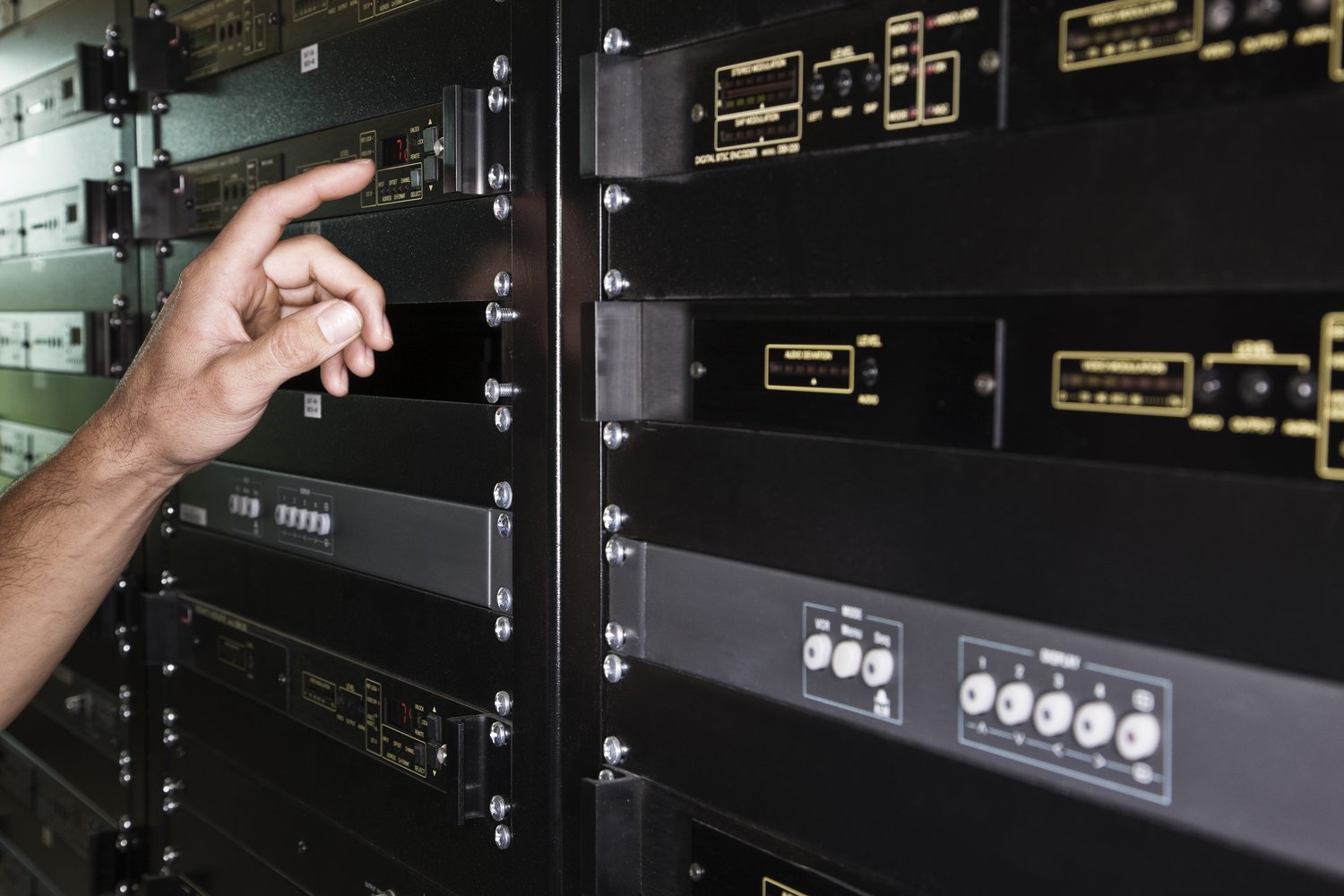Experiencing unexpected hiccups while trying to stream your favorite movie from your home media server can be frustrating. These technical interruptions can stem from various connectivity issues and file access limitations that are more common than you might think. Let’s dive into understanding and resolving these problems to ensure your streaming experience remains smooth and uninterrupted.
- Discover the fundamental elements that can cause connectivity issues and disrupt your home media server’s performance.
- Learn step-by-step approaches to diagnose and fix network problems, maintaining a reliable and stable streaming environment.
- Understand the role of file permissions and formats in accessing your media files without hassle.
- Explore ways to optimize your hardware and software for better streaming performance, including using the right codecs.
- Stay ahead of the curve with future innovations in home streaming technologies that promise to enhance your media experience.
This guide equips you with the essential strategies to tackle streaming issues head-on, providing you with the tools to enjoy seamless media access at home. Read on to uncover practical solutions and insights that will revolutionize your home media streaming setup.
Understanding the Basics: Home Media Server Not Streaming? Connection and File Access Challenges
When dealing with home media server streaming issues, it’s crucial to understand the fundamental components that form the backbone of your media ecosystem. A home media server operates by storing media files and delivering them to your devices via a network connection. However, several connectivity issues can arise, hampering the streaming experience.
One primary factor affecting streaming performance is the configuration of your media server. Incorrect server settings can lead to interrupted services or slow streaming speeds. It’s important to ensure your server is optimized for your specific network conditions and is regularly updated.
Network settings also play a significant role in how efficiently your media files are accessed. Elements such as IP configurations, firewalls, and security protocols need to be correctly configured to allow seamless file delivery. Often, misconfigured network settings are the root cause of reduced streaming quality, as they can prevent media files from being accessed smoothly.
Understanding these essential aspects helps create a solid foundation for troubleshooting and improving streaming capabilities. By ensuring that both server configurations and network settings are correctly aligned, you can prevent the majority of connection challenges that disrupt your home media server experience.
Troubleshooting Connectivity Issues: Ensuring a Stable Streaming Environment
To enjoy uninterrupted media streaming, resolving network connectivity problems is vital. Start with examining your router settings. Ensure that your router’s firmware is up-to-date since outdated firmware can lead to connectivity problems. Place your router in a central location to minimize network interference from physical obstacles.
Another critical area is checking for bandwidth limitations. Streaming media requires substantial network resources; therefore, multiple devices connected simultaneously can deplete available bandwidth. Ensure your network can handle the demand by upgrading to a higher bandwidth plan if necessary.
Network interference is another common issue. Devices like microwaves and cordless phones often operate on similar frequencies, causing disruptions. To mitigate this, switch your router to a less congested channel and use the 5 GHz frequency band, which generally faces less interference than the 2.4 GHz band.
Finally, regularly monitor your network’s performance using tools to identify and rectify potential issues before they impact your streaming. By following these practical tips, you will maintain a stable streaming environment conducive to robust home media server performance.
Ensuring Proper File Access: Overcoming Home Media Server Streaming Hurdles
File access issues can significantly impact the performance of your home media server, preventing seamless media streaming. One critical aspect to consider is file permissions and sharing settings. Ensuring that your media files have the correct permissions allows your server to stream content without unnecessary interruptions.
Check the permission settings on your server to make sure that files are accessible to the appropriate users. This often involves adjusting the settings to allow reading and potentially writing permissions, depending on how you manage your files. Misconfigured settings could lead to access denials or streaming glitches.
Beyond permissions, focusing on correct file formatting is essential for efficient streaming. Various media players support different formats, so ensure your files are compatible with the media server software and devices being used for playback. Common formats like MP4 and MKV are generally safe choices.
Managing large media libraries is another challenge. Consider organizing your files in a logical directory structure. This can help reduce the server’s load when searching for particular files and streamline the streaming process. Utilizing metadata, such as tags and descriptions, can also simplify library management and enhance user experience.
Optimizing Your Setup: Enhancing Performance for Home Media Server Streaming
Optimizing both hardware and software configurations can dramatically improve your home media server’s streaming capabilities. Start by evaluating your server hardware. Ensuring that your server meets the required specifications for streaming – such as sufficient CPU power, RAM, and disk speed – is crucial for smooth operation.
Consider upgrading existing components or investing in a dedicated server if your current setup struggles with high-quality streaming demands. This can help handle higher data transfers and support multiple concurrent streams without buffering.
Choosing the right media server software can also make a significant difference. Popular options like Plex and Emby offer robust features that enhance streaming quality and user interaction. Make sure to regularly update the software to benefit from performance improvements and security patches.
Additionally, effectively utilizing codecs and transcoders can enhance your streaming experience. Codecs handle encoding and decoding of media files, while transcoders convert media files into formats suitable for the device being used. By selecting efficient codecs and optimizing transcoder settings, you can ensure smoother and more reliable streaming performances across various devices.
Future-Proofing Your Media Experience: Innovations in Home Streaming Technologies
As technology continues to evolve, staying updated with the latest advancements can considerably enhance your home media streaming experience. One of the significant trends is the adoption of advanced network solutions. Implementing mesh Wi-Fi systems can ensure seamless connectivity throughout your home, eliminating dead zones and providing a stable streaming environment for all your media needs.
Another exciting development is the integration of smart devices. Smart TVs and streaming devices that support voice control and automation can simplify how you access and manage your media library. These devices often support a wide range of streaming platforms and formats, offering a more versatile and user-friendly experience.
Cloud services are also playing a vital role in modernizing media experiences. Utilizing cloud-based media storage allows you to access your content from anywhere with an internet connection. Beyond convenience, this method offers enhanced scalability for growing media libraries and improved data security through regular backups and encryption.
Moreover, advancements in processing technologies mean more efficient and higher-quality media compression standards, such as HEVC, are becoming widely used. These technologies help reduce file sizes, ensuring faster load times and less bandwidth usage without compromising on picture quality.
Incorporating these innovations not only optimizes your current setup but also future-proofs your home media system in a rapidly changing digital landscape. By embracing these technologies, you can enjoy a more immersive and uninterrupted streaming experience, while also preparing for future advancements with ease.
Frequently Asked Questions on Home Media Server Issues
Why is my home media server not streaming?
Your home media server might not be streaming due to network issues, server configuration errors, or file access problems.
How can I fix connectivity issues with my home media server?
Check your router settings for proper configuration, ensure there’s no network interference, and verify that bandwidth is sufficient for streaming.
What should I do if the server files are not accessible?
Ensure file permissions and sharing settings are correct. Also, check if files are in compatible formats.
How can I enhance the performance of my media server?
Consider upgrading hardware, selecting appropriate media server software, and utilizing the right codecs and transcoders.
What future technologies can improve home media streaming?
Look into advanced network solutions, smart device integration, and cloud services for better media accessibility.





